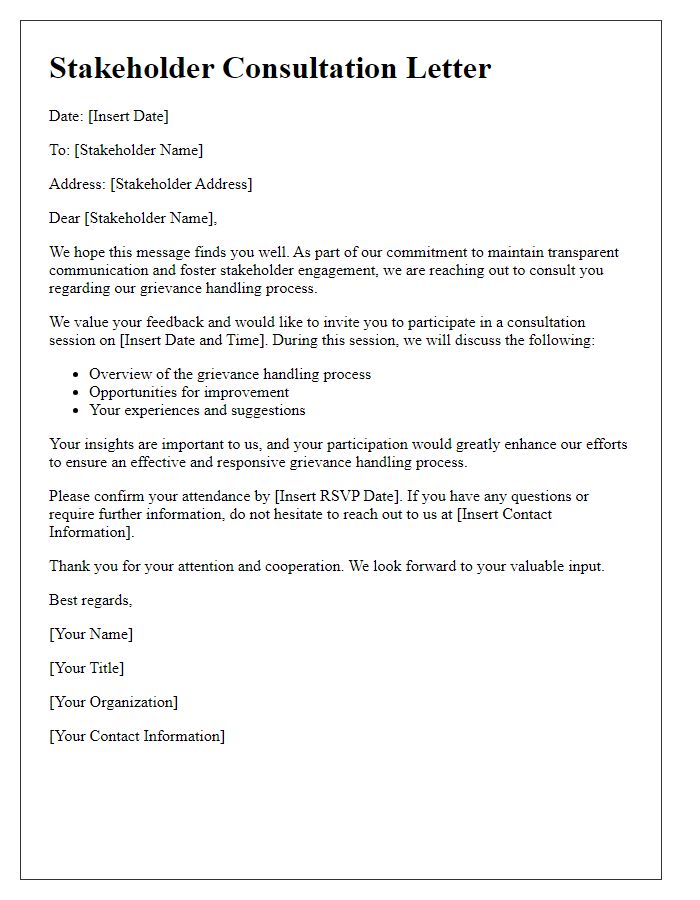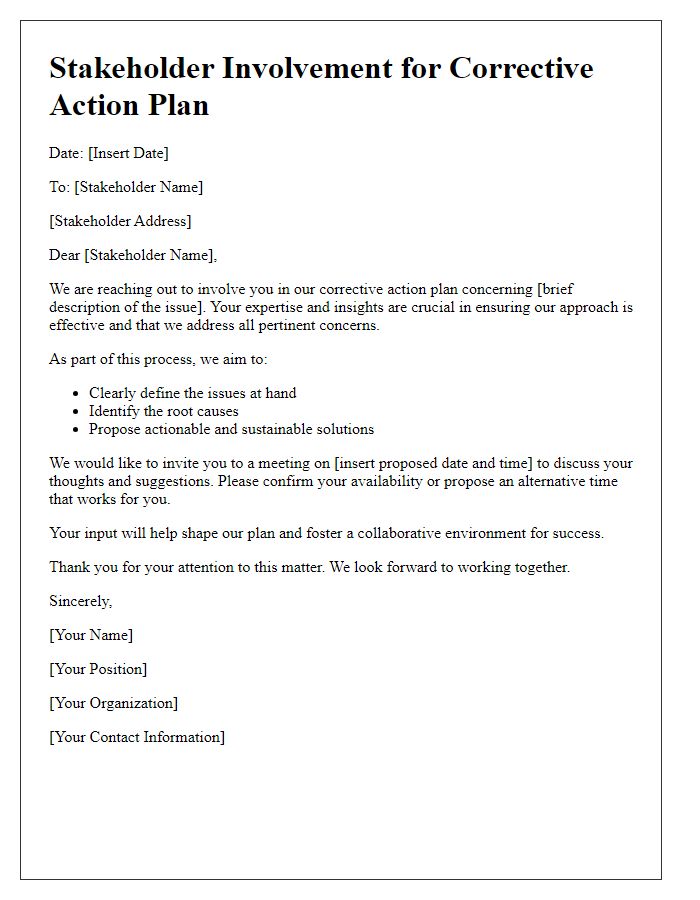Are you facing challenges in engaging your stakeholders effectively? Crafting a well-structured resolution plan can make all the difference in turning conflicts into productive conversations. In this article, we'll explore a comprehensive letter template designed specifically to address stakeholder concerns while fostering collaboration. So, let's dive in and discover how to create a compelling communication that paves the way for successful resolutions!

Clear Problem Statement
Clarity in problem identification is crucial for effective resolution in stakeholder challenge scenarios. A detailed problem statement outlines the core issue facing stakeholders, which could involve financial discrepancies (e.g., budget overruns exceeding 20%), communication breakdowns (such as missed deadlines on critical deliverables), or dissatisfaction with project outcomes (indicated by a survey revealing 35% of stakeholders feeling undervalued). The problem statement should encompass specific context, highlighting the impact on operations, potential risks (including implications for compliance and regulatory adherence), and the urgent need for a structured approach to address the concerns. Therefore, articulating a clear problem statement serves as the foundation for developing a robust resolution plan that aligns objectives and fosters stakeholder engagement.
Stakeholder Identification
Effective stakeholder identification is essential in the development of a challenge resolution plan for organizational projects. Key stakeholders may include customers (end-users who will utilize the product or service), employees (individuals directly involved in executing the project), management (decision-makers overseeing project direction), suppliers (vendors providing necessary resources), and regulatory bodies (government organizations ensuring compliance with laws). A comprehensive stakeholder analysis involves mapping these groups based on their influence and interest levels, employing tools such as the power-interest grid. Engagement strategies differ for each category; high-power, high-interest stakeholders may require regular updates and consultations, while low-power, low-interest groups may benefit from minimal communication. Understanding motivations and concerns of stakeholders ensures that their needs are acknowledged, thereby fostering support, reducing resistance, and ultimately facilitating successful project outcomes.
Resolution Strategy Overview
The Resolution Strategy Overview outlines a comprehensive approach to address stakeholder challenges effectively. Key steps include stakeholder identification, which involves mapping out critical stakeholders like investors, employees, and community members. The assessment phase evaluates concerns raised regarding project timelines, resource allocation, and communication transparency. A robust engagement plan will include regular updates through town hall meetings, newsletters, and one-on-one consultations to ensure stakeholders are informed and heard. Conflict resolution mechanisms will be established, such as facilitated discussions and feedback loops, to encourage open dialogue. Success metrics will be defined to measure resolution effectiveness, including stakeholder satisfaction surveys and project milestone achievements. Continuous improvement processes will be implemented to adapt strategies based on stakeholder feedback and changing circumstances.
Action Steps with Timeline
Stakeholder challenge resolution plans require clear action steps and a defined timeline to ensure effective communication and problem-solving. First, identify the stakeholders involved, such as project managers or community members, to facilitate collaborative discussions. Next, outline specific action steps, including meetings scheduled for the third week of March 2024, to gather feedback on the challenges identified. Assign responsibilities to each stakeholder, ensuring accountability and clarity. Regular progress reviews bi-weekly until early May 2024 will help monitor implementation effectiveness. Finally, evaluate the outcomes in June 2024 to measure improvements and adapt future strategies.
Monitoring and Feedback Mechanism
Stakeholder engagement involves establishing a comprehensive monitoring and feedback mechanism to ensure effective communication during project execution. Regular assessments are necessary to track progress, identify potential challenges, and gather insights from stakeholders, such as employees, community members, and investors. Utilizing tools like surveys, feedback forms, and data analytics can enhance transparency and collaborative problem-solving. Iterative review meetings, scheduled bi-monthly, allow stakeholders to voice concerns and suggest adjustments. Clear metrics will define success parameters, such as stakeholder satisfaction rates and project deliverables, ensuring alignment with overall objectives. This structured approach fosters a proactive environment, leading to timely resolutions and stronger relationships.
Letter Template For Stakeholder Challenge Resolution Plan Samples
Letter template of stakeholder engagement for conflict resolution strategy

Letter template of stakeholder collaboration for problem-solving approach

Letter template of stakeholder feedback for challenge management outline

Letter template of stakeholder consultation for grievance handling process

Letter template of stakeholder partnership for crisis resolution document

Letter template of stakeholder negotiation for issue resolution proposal








Comments